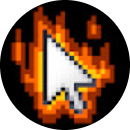Read the following passage and mark the letter A, B, c, or D on your answer sheet to indicate the correct answer to each of the questions from 35 to 42.
Most of us associate robots with films such as Star Wars, I, Robot or AI, but in reality they have more to do with social issues and politics rather than science fiction. The term robot first made its appearance in a play entitled Rossum s Universal Robots written almost a century ago by a Czechoslovakian playwright by the name of Karel Capek. Capek got the name robot from the Slavic word ‘ robota’ which means forced labour. In his play, he portrays a society where robots, which look human, are mass produced to work in the place of people.
Capeks story was well received by the critics but never really got credit for being the source of the notion of robots. The play has significant relevance to our society today, as humanoid-type robots are being created to fulfil a wide range of tasks. Robot engineers are not only developing mindless worker drones, but are attempting to create human-like companion robots for people. Consequently, the question of what actually makes us human is the subject of lively debate.
In the USA, sociable robotics is developing at a relatively rapid rate and a human companion type of robot could soon be a reality. Japanese researchers see a very bright future for these robots who will serve as friends or family to the lonely. Nevertheless, one needs to ask if a human being can have a relationship with a machine in the same way as they do with other people or animals and if so, what effect this could have on our society. The success of robot toys or virtual pets suggests that this type of relationship is possible.
Research shows that children tend to have similar relationships with humans as with non-humans whereas the same is true for adults only with pets or when the robot is designed to look like a child. This is probably because robots display superficial emotions and cannot as yet replace human touch. But will these machines one day succeed in replacing humans?
Some paint a very dark picture of a robot society and predict that artificially intelligent machines will take control of the entire planet and dominate the human race. However robot technology is still in its infancy and the idea of them taking over the world is pure fantasy to most of us, including scientists. In fact, most robots can only perform very basic tasks and even the most advanced robot that is capable of expressing over forty different emotions seems to do so in a totally random manner, regardless of what is going on around it.
In spite of the simplicity of today’s robots, robotic technology is impacting our everyday lives in a dramatic way. Nowadays, our robots are becoming more and more like those portrayed in Capeks work. In a society where human relationships are so often strained, it is no surprise that the possibility for human-robot relationships is increasing.
When most people think of robots, they tend to think of _____________
A. literature
B. social issues
C. politics
D. films














